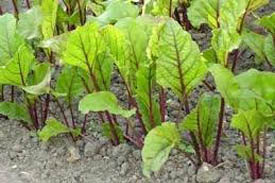Gardening: Constructing the Grow Haus
The term: Grow Haus is my own, coined in 1970 in a paper I wrote. There has been a great deal of thought and experimentation since the early model, but now is the unveiling. The goal was to create a solar design, with no external heat, reduced fertilizer, natural processes and under bed watering for urban, suburban and other Back2theLand gardeners. I like to think of this as the ultimate greenhouse.
Let me define some facts on conventional rigid greenhouses we all admire and wish to own: They are too initially expensive for the average gardener’s budget, very costly to operate in the winter as you need natural gas or propane heat. This fact alone has cost many commercial and past affluent homebuyers to give up on the winter greenhouse, which now sits unused except as a cold frame-seasonal extender.
The greenhouse concept of a light emitting structure of glass, acrylic, fiberglass, or plastic sheet if it is not internally heated is a cold frame. If the design incorporates a heat holding mass, such as water or rock which releases heat at night-even in the coldest winters it is a “solar” greenhouse. If the solar greenhouse is highly insulated for below zero coldness protection, it then becomes a true solar greenhouse, and environmentally friendly.
These pictures are an inkling of the pleasure I get from my three level Solar Greenhouse spanning an area of 600 sq. feet. All of the construction materials, save treated lumber, sealing compounds, galvanized nails-screws, and bolts was re-cycled-free, and cost less than $3,000.00.
The above Solar Green House may be a bit too ambitious for some enthusiasts at this time, but with reader input I will provide extensive data on this model after you have examined the below design.
What I have designed, built, and with further refining next spring, is an “In Garden Solar Grow Haus” that any one with ambition and less money can construct. This model is a self-perpetuating model of fertilization, watering, heat, reduced weeds, 100% natural and a nice place to sit down in the winter’s warmth away from the cares of the world and think about the next structure. The cost will be minimal.
Our last article was an introduction to water needs; any greenhouse of any type requires water. Our goal is to get away from the water spigot connected to the city, or home well. Therefore the placement of this structure requires certain rules to follow.
This structure is a 10’ x 20’ (or longer) growing bed with a north wall backing of 6’ and a south by southwest window of light. In my upper garden plot I will constructs this design in March when the ground thaws in front of my three room chicken house facing towards the two-story barn. In the dead of winter, at the solstice (about X MAS time), the long shadow of the low angle sun at noon cuts off about 30’ of my garden light, so I must keep my construction all within 70’ of depth that allows me about 3 of these Solar Grow Hauses to be constructed. This affords the light angle shadow from raised heights not to interfere with the windows gathering warmth and light.
The spaces around the structures are open to the chickens for free range in an enclosed fenced area. The sense is that I can grow mixed grains in these runways for the chickens. The summer months have a high sun angle, and the 30’ front to the barn is for root crops that enjoy an extra colder season such as parsnips, mangles, and potatoes when the shadow creeps up in the winter.
To understand the history of learning what the plants want is based on several constructions over the past 30 years. My first solar greenhouse was in Virginia Beach. With limited space I pit dug an 8”X10” hole 5” deep, hand cast my own soil block bricks, and built a basic A frame structure, heavily insulated, over the pit. The idea of the pit was to reduce heat loss-which it does, and I used the obsolete septic concrete tank and a couple of barrels as my heat-gathering source. I produced considerable starter plants for the garden season, but no food production inside. My watering was from a hose, and the door was too small. Also I faced it too far west, but it worked for me and I was thrilled. Mostly I learned from errors, and from plant needs.
After moving to beautiful Floyd County, my first tomato crop was killed on September 5th, 1981: a hard unexpected freeze. I decided to build a Tomato house. This was a very simple structure on a south-facing wall of an old milk house. It was then 10’by 4’ and 7’ high, framed in by treated 2’x4” wood and fiber glassed over, tacked in by rubber grommet roofing nails. A too small door was added on one end. This was a success and by the next season I had increased a ladder effect for the plants that thrived in the sunlight and hose watering (later converted to a mist system). I followed up by placing heat mats on the horizontal ladder and started my seedlings therein.
You will note in this picture the vertical end wall tomato house-regulated to tomatoes growing on the base. By the time they got to 4 or 5 feet, the garden starter seedlings were removed and we had plenty of tomatoes for the season with no frost worries. However I was short on other lettuces and such so built a cold frame in front of the tomato house. I just needed more and more protected growing area.
After the big Solar Green House I started thinking in 2002 about the draughts, global natural and manmade warming, and to alternative views on ice age theory. In any event it meant less water, less seasonal ability to produce food, and an anxiety about relying on the system to always have a grocery store stocked full. Plus it keeps me busy.
I thought to experiment with a “Hoop House” concept, which is popular because it is as inexpensive as a cold frame, the larger ones in commercial use and garden centers are heated. My view was that I could improve on this basic seasonal extender.
I had extra space in front of the Solar Green House before it dropped off, as a cliff, giving me about 12 feet width and 40’ in length. I first tilled deeply, added 26 bags of leaves, wheelbarrow loads of rabbit manure, some old composted chicken manure, 5 pounds of bone meal, dolomite lime, seaweed/kelp powder, and composts with rock powders mostly from baby granite chicken grit. I tilled this into a bed 6’ wide and 30’ long. Adding a basic 2”x10”x 10’ treated planks to frame it in with scrap 2”x4” holding pins at the ends of the planks and corners. Galvanized nails were used. After the final tilling I added a horizontal 1”x6” frame nailed to the big planks. This was for the vertical plastic tubing later installed.
At this point I could stop and grow food in an enriched bed, providing hose surface water, and my big foot packing the soil down tight. I contemplated making this a new asparagus bed while feeding the terrapins, rabbits and herds of deer.
So the next step was trenching the bed to lay in slotted 4” diameter drainpipes below the surface about 12”. Covering the pipes is a necessary “sock’ that slides down the pipe, sold with the pipes, to keep the sand out and prevent clogging as time passes. The pipes were leveled, bent into a common opening at each end to collect roof run off rainwater.
Notice on this small 6’ wide bed the under ground water slotted drain pipes with white socks are at the side of the boards, later larger beds will have a double water pipe as they will be 10’ wide. This was an experimental bed. Note that the ends of the pipes are curved around with 90 degree fittings and T connectors which all snap together to form an upright pipe coming out of the soil to access the water run off from the Solar Green House windows.
Of course this all piles the soil up in the center and with that mound of soil we will close this week and explain more next week as we look for learning points in the progress of building the Garden Grow Haus.
Contact me at: back2theland@swva.net
COPYRIGHT 2009: Back2theLand.com, Mark Steel



